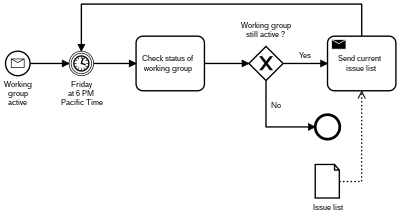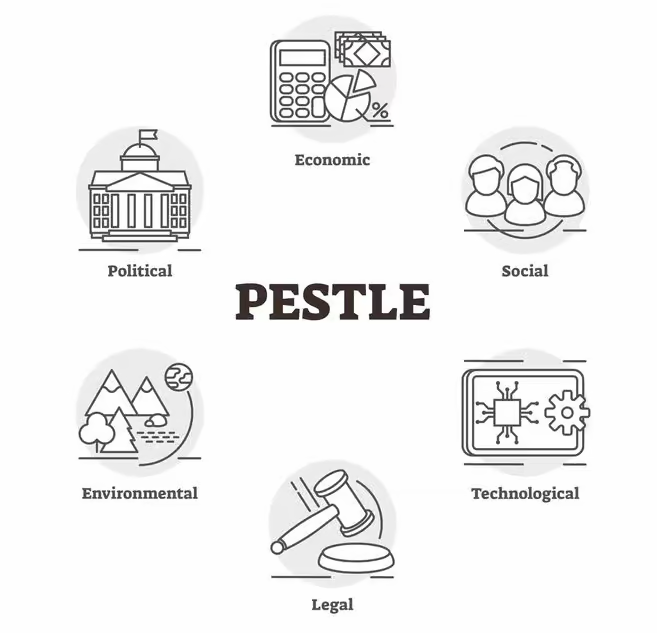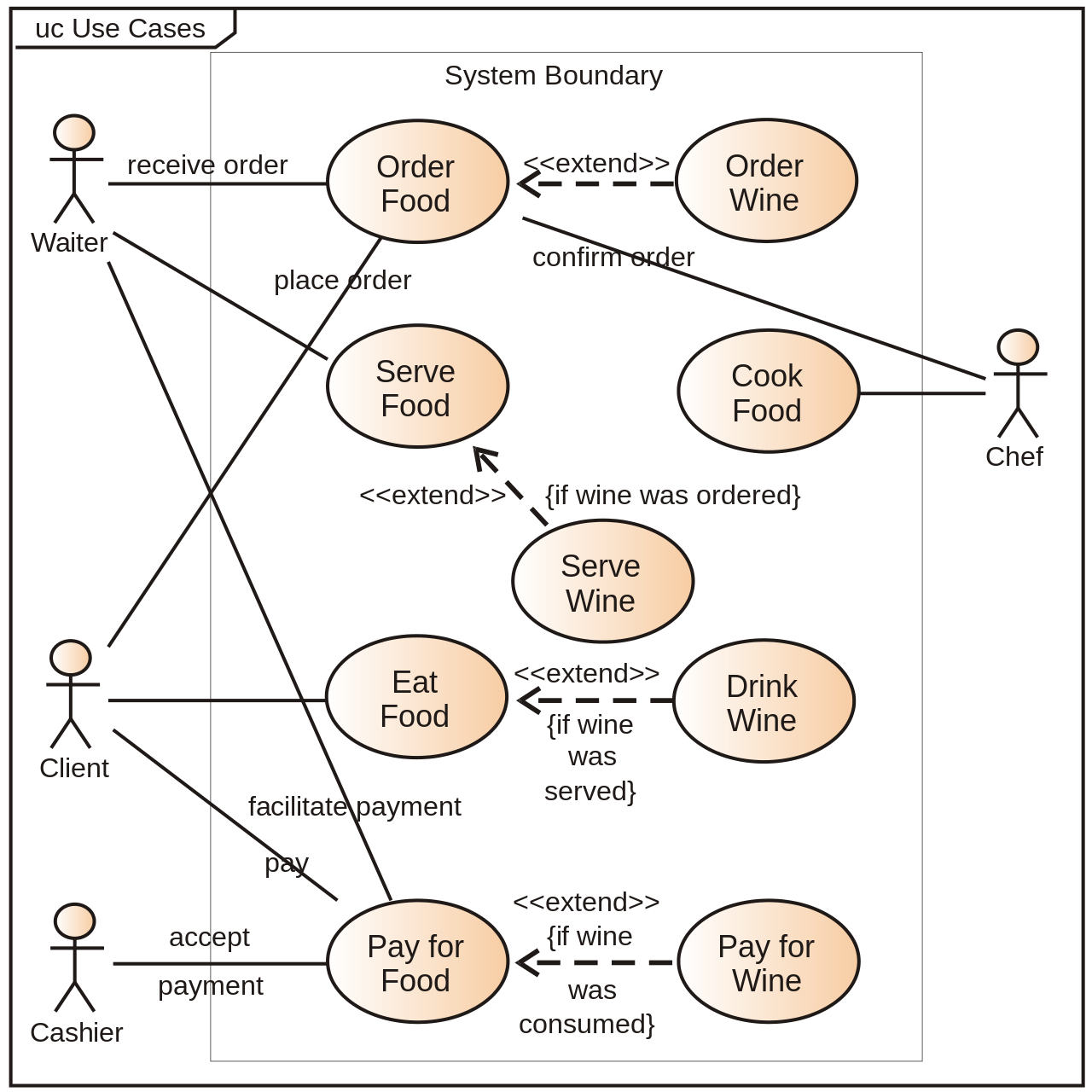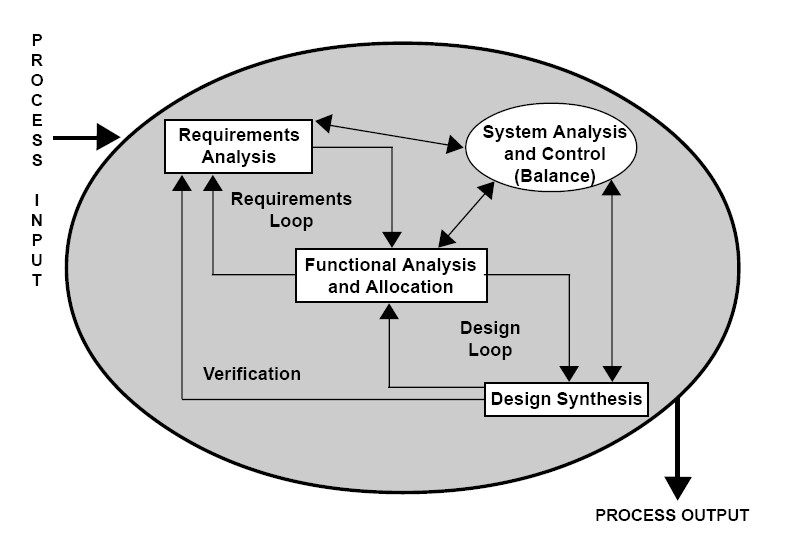In the ever-evolving landscape of the business world, the importance of leveraging effective business analysis techniques cannot be overstated. These techniques serve as valuable tools for identifying business needs, uncovering opportunities, and mitigating potential threats in a rapidly changing marketplace.
Business analysis techniques are essential processes professionals use to understand and analyse business requirements, devise strategic plans, and deliver optimal solutions. These techniques empower business analysts to bridge the gap between business goals and technological advancements, making them indispensable contributors to organisational success.
In this article, we will explore the top business analysis techniques that will be most relevant and impactful going forward.
1. SWOT Analysis: Evaluating Strengths, Weaknesses, Opportunities, and Threats

One of the most widely adopted and versatile techniques in the business analysis arsenal is the SWOT analysis. SWOT stands for Strengths, Weaknesses, Opportunities, and Threats. SWOT analysis delivers a holistic understanding of a company's current position in the market and aids in strategic decision-making. By examining internal factors such as resources, capabilities, and organisational culture, as well as external factors like market trends, competition, and regulatory changes, businesses can develop actionable insights to enhance their competitive edge.
Case Study: ABC Retail
ABC Retail, a UK-based fashion retailer, aimed to expand its market presence. SWOT analysis revealed that their website's user experience held competitive advantage, attracting a loyal customer base (a strength). However, they faced increasing online competition from global giants (a weakness).
To leverage their strengths and address potential threats, ABC Retail invested in customer-centric digital marketing campaigns and upgraded their online shopping platform. Not only did they retain their loyal customer base, but they also attracted new customers and witnessed a significant boost in online sales.
SWOT analysis provides a snapshot of the current situation and may not account for future uncertainties. As businesses operate in a rapidly changing environment, regular updates to the SWOT analysis become necessary to stay relevant and responsive to market dynamics.
2. MOST Analysis: Understanding Mission, Objectives, Strategies, and Tactics
SWOT analysis provides a snapshot of the current situation and may not account for future uncertainties. As businesses operate in a rapidly changing environment, regular updates to the SWOT analysis become necessary to stay relevant and responsive to market dynamics.
Case Study 1: HealthCare Solutions UK
HealthCare Solutions UK, a healthcare service provider, wanted to improve patient care and optimise operational efficiency. By conducting a MOST analysis, their business analysts identified the mission of delivering high-quality healthcare services to patients across the UK. Key objectives included reducing patient wait times and enhancing medical staff satisfaction.
As a tactic, HealthCare Solutions UK implemented advanced medical technologies, streamlined administrative processes, and enhanced employee training programs. Additionally, they invested in state-of-the-art medical equipment, redesigned patient scheduling systems, and introduced performance-based incentives for medical staff. The successful implementation of the MOST analysis resulted in improved patient outcomes, increased staff retention, and positive feedback from both patients and employees.
By defining a clear mission, companies can establish a sense of purpose and direction, inspiring employees and stakeholders. Identifying key objectives ensures that efforts are focused on achieving specific goals that contribute to the overall mission. Developing well-defined strategies allows businesses to leverage their strengths and capitalise on opportunities to outperform competitors. Lastly, actionable tactics enable effective implementation, translating strategies into tangible outcomes.
However, the success of MOST analysis depends on the organisation's ability to accurately articulate its mission and objectives. In some cases, misalignment between the mission and day-to-day operations may hinder effective strategy execution. Regular reassessment and adjustment of strategies and tactics are essential to accommodate dynamic market conditions and emerging opportunities.
3. Business Process Modeling (BPM): Mapping the Path to Operational Excellence

Image from https://en.wikipedia.org/wiki/Business_process_modeling
In the pursuit of efficiency and productivity, Business Process Modelling (BPM) emerges as a vital technique in the arsenal of business analysts who wish to optimise business processes to achieve operational excellence and enhanced customer satisfaction.
By visually representing workflows, interactions, and dependencies, business analysts can pinpoint inefficiencies, bottlenecks, and redundancies. The objective is to streamline processes, reduce costs, and enhance overall organisational performance.
Conducting BPM requires a detailed examination of existing business processes. Utilising various modelling techniques such as flowcharts, swimlane diagrams, and process maps, analysts represent the sequence of activities, decision points, and data flow within the process.
Case Study 1: RetailX
RetailX, a UK-based retail chain, aimed to optimise its supply chain and inventory management processes through BPM. The company’s business analysts meticulously documented the entire supply chain, from product sourcing to customer delivery. By analysing the process flow, they identified delays in transportation and inventory overstocking as major pain points.
To address these challenges, RetailX streamlined transportation logistics, leveraging real-time tracking systems, and implemented a data-driven demand forecasting approach. As a result, the company reduced lead times, minimised stockouts, and achieved significant cost savings. The successful implementation of BPM contributed to increased customer satisfaction and improved profitability for RetailX.
By visualising and analysing business processes, companies can identify inefficiencies, eliminate redundancies, and optimise resource allocation. BPM fosters transparency and collaboration among teams, facilitating a culture of continuous improvement, but the process of modelling complex business processes can be time-consuming and resource-intensive. Nonetheless, BPM remains a powerful technique for organisations aiming to achieve operational excellence and deliver superior customer value.
4. PESTLE Analysis: Navigating the External Business Environment
PESTLE analysis is a valuable technique used by business analysts to assess the impact of political, economic, social, technological, legal, and environmental factors on the organisation.

PESTLE analysis helps businesses understand the external macro-environmental factors that can affect their operations. By identifying these factors, organisations can proactively respond to opportunities and threats in the market, and formulate effective strategies to stay ahead of the competition. Business analysts gather data from various sources, including market research, industry reports, government publications, and expert analysis. They analyse political stability, economic trends, social demographics, technological advancements, legal regulations, and environmental sustainability to gain a comprehensive understanding of the external business environment.
Case Study 1: EcoTech Solutions Ltd.
EcoTech Solutions Ltd., a renewable energy company, wanted to expand its operations in the UK market. Through PESTLE analysis, their business analysts identified the growing demand for sustainable energy solutions due to increasing environmental awareness (Environmental factor). Additionally, favourable government policies and incentives for renewable energy companies (Political factor) contributed to a conducive business environment.
Leveraging this analysis, EcoTech Solutions Ltd. formulated a market entry strategy focused on targeted marketing campaigns, government partnerships, and investments in advanced green technologies. The successful implementation of PESTLE analysis allowed the company to establish itself as a prominent player in the renewable energy sector, experiencing substantial growth and profitability.
PESTLE analysis offers several advantages for businesses operating in dynamic markets. By understanding the external environment, organisations can identify growth opportunities, mitigate risks, and make informed decisions. PESTLE analysis also encourages proactive thinking and fosters a forward-looking approach to strategic planning.
However, external factors are often interconnected, making it challenging to isolate the impact of a single factor on the business. PESTLE analysis relies heavily on the accuracy and reliability of external data sources, which may sometimes be subject to bias or inaccuracies.
5. CATWOE Analysis: Uncovering Stakeholder Perspectives for Holistic Solutions
CATWOE analysis is a business modelling technique that allows analysts to understand the perspectives of different stakeholders involved in a process or project. The acronym CATWOE stands for Customers, Actors, Transformation process, Worldview, Owners, and Environmental constraints.
To conduct CATWOE analysis, business analysts engage with stakeholders and use structured interviews, workshops, or surveys to elicit their viewpoints. They explore the following dimensions:
- Customers: Identify the end-users or beneficiaries of the process or project and their specific needs and expectations.
- Actors: Identify the individuals or groups responsible for carrying out the activities and tasks involved in the process or project.
- Transformation process: Understand the core activities that drive the process or project and the inputs and outputs of the transformation.
- Worldview: Explore the stakeholders' beliefs, values, and vision, which shape their perspective on the process or project.
- Owners: Determine the individuals or entities with the authority to make decisions and influence the direction of the process or project.
- Environmental constraints: Consider external factors, such as regulations, market conditions, and technological limitations, that may impact the success of the initiative.
Case Study 1: Education4All Initiative
Education4All, a non-profit organisation, aimed to improve access to quality education for underprivileged children in the UK. Through CATWOE analysis, their business analysts identified key stakeholders, including students, teachers, parents, volunteers, and donors.
By understanding the unique perspectives of each stakeholder, Education4All tailored its educational programs, curriculum, and support services to cater to the specific needs of the children and the expectations of teachers and parents. The successful implementation of CATWOE analysis contributed to higher student engagement, improved academic performance, and increased community support for the initiative.
CATWOE analysis is particularly valuable in projects or processes that involve multiple stakeholders with diverse perspectives. CATWOE analysis fosters stakeholder engagement, collaboration, and buy-in, ensuring the successful implementation of initiatives.
However, CATWOE analysis may be time-consuming and require significant effort to engage with stakeholders and understand their viewpoints fully. Additionally, it may be challenging to reconcile conflicting perspectives and preferences, leading to potential trade-offs in the decision-making process.
6. MoSCoW Analysis: Prioritising Requirements for Project Success
In the dynamic business environment, projects often encounter changing requirements and constraints. MoSCoW analysis is a valuable technique used by business analysts to prioritise and manage project requirements effectively.
Definition and Purpose of MoSCoW Analysis
MoSCoW analysis is a project management technique that categorises requirements into four priority levels: Must have, Should have, Could have, and Won't have (at least this time). This business analysis technique helps businesses and project teams focus on critical elements, deliver value early, and make informed decisions when managing project scope and resources.
MoSCoW analysis involves collaborating with stakeholders, such as project sponsors, end-users, and subject-matter experts, to identify and prioritise requirements. The analysis is based on the following categorisation:
- Must have: These requirements are non-negotiable and represent the essential features or functionalities that must be delivered for the project to be successful.
- Should have: These requirements are important, but not critical for the initial release. They can be considered for inclusion if time and resources permit.
- Could have: These requirements are desirable, but not critical. They can be considered for future releases or as part of ongoing enhancements.
- Won't have (at least this time): These requirements are explicitly excluded from the current project scope. They may be revisited in future projects or considered for inclusion based on changing business needs.
Case Study 1: TechGenius Software Solutions
TechGenius Software Solutions, a technology startup, embarked on a project to develop a cutting-edge mobile app. Through MoSCoW analysis, their business analysts worked closely with stakeholders to prioritise features and functionalities.
By focusing on “Must-have” features, TechGenius Software Solutions delivered a functional and user-friendly app to the market within the targeted timeline. The app's early success and positive user feedback enabled the company to secure additional funding for future development, ensuring continued growth and innovation.
MoSCoW analysis offers numerous benefits for businesses seeking project success. By focusing on critical requirements, organisations can ensure timely delivery of valuable outcomes and maintain stakeholder satisfaction. MoSCoW analysis also promotes effective resource allocation and risk management, allowing businesses to optimise their project investments.The technique may also lead to potential disagreements or compromises during the prioritisation process, necessitating effective communication and stakeholder alignment.
7. Use Case Modelling: Bridging the Gap between Business and IT
One of the key challenges in implementing business solutions is effectively communicating business requirements to IT teams and developers. Use case modelling is a powerful technique used by business analysts to bridge the gap between business stakeholders and technical teams.
Use case modelling is a visual technique that helps business analysts describe how users interact with a system or process to achieve specific goals or tasks. It enables analysts to capture functional requirements, depict system behaviour, and ensure that business needs are accurately translated into technical specifications.

Image from https://en.wikipedia.org/wiki/Use_case_diagram
To conduct use case modelling, business analysts engage with business stakeholders to identify the primary actors (users) and their specific goals or tasks. They then create use case diagrams to illustrate the interactions between actors and the system. Additionally, they develop use case narratives to describe the step-by-step interactions and system responses.
Case Study 1: FinTech Solutions Ltd.
FinTech Solutions Ltd., a financial technology firm, sought to develop a mobile banking app that catered to the evolving needs of customers. Through use case modelling, their business analysts collaborated with end-users and UX designers to capture user requirements and expectations.
The use case diagrams and narratives provided a clear understanding of the app's features, functionalities, and user interfaces. This facilitated seamless communication between business stakeholders and the development team, resulting in a user-friendly app that met customer expectations and complied with regulatory standards.
Use case modelling is widely adopted by UK businesses across diverse industries, including finance, healthcare, e-commerce, and technology. It serves as a crucial communication tool, fostering collaboration and mutual understanding between business and IT teams.
By visualising user interactions, organisations can identify potential gaps or conflicts in requirements and proactively address them. Use case modelling also supports effective test case development and user acceptance testing, ensuring that the final solution meets user needs.
However, use case modelling requires a profound understanding of business processes and user behaviour to develop accurate and comprehensive diagrams and narratives. It is also one of the more time-intensive business analysis techniques, especially for complex projects with multiple user scenarios. Nonetheless, the benefits of improved communication and alignment between business and IT teams outweigh the potential challenges.
8. Requirements Analysis: Understanding Stakeholder Needs for Project Success
Requirements analysis is a foundational technique that underpins the success of any business initiative or project. It involves identifying, eliciting, and documenting business needs to guide the development of solutions that meet stakeholder expectations.

Image from https://en.wikipedia.org/wiki/Requirements_analysis
A requirements analysis helps establish a clear understanding of project objectives, scope, and deliverables, laying the groundwork for successful project planning and execution. Requirements analysis involves a series of steps to collect and document business needs. They analyse and prioritise requirements, ensuring alignment with business goals and feasibility within project constraints.
Case Study 1: Retail Revolution Ltd.
Retail Revolution Ltd., a retail chain, aimed to revamp its online shopping platform to enhance the customer experience. Requirements analysis conducted by their business analysts involved extensive customer feedback and user testing.
By understanding customer preferences, pain points, and expectations, Retail Revolution Ltd. prioritised features that would deliver the most value to customers. The implementation of these requirements resulted in a user-centric e-commerce platform, leading to increased online sales and customer loyalty.
Requirements analysis is an essential practice embraced by UK organisations across various sectors, including finance, education, energy, and manufacturing. It serves as a critical tool for project success, enabling businesses to define clear project objectives and deliverables. To overcome these challenges, business analysts must apply effective requirements management and change control processes, ensuring that project scope and objectives remain well-defined and achievable.
9. Six Thinking Hats: A Systematic Approach to Decision Making
Six Thinking Hats is a powerful technique used by business analysts to encourage structured thinking and explore multiple perspectives in the decision-making process.
Six Thinking Hats, developed by Dr. Edward de Bono, is a creative thinking business analysis technique that involves assigning different “thinking hats” to individuals in a group discussion or problem-solving session. Each hat represents a specific thinking style, encouraging participants to view a situation from different angles.
During a Six Thinking Hats session, business analysts guide participants through six distinct thinking roles, each associated with a specific colour hat:
- Neutrality (White Hat): Focus on facts, data, and objective information. Analyse available data and identify information gaps.
- Creativity (Green Hat): Encourage creative and innovative ideas without judgement. Explore new possibilities and alternative approaches.
- Positivity (Yellow Hat): Focus on benefits and positive outcomes. Identify opportunities and potential benefits of proposed solutions.
- Caution (Black Hat): Consider potential risks, challenges, and drawbacks. Highlight areas that require further analysis and risk mitigation.
- Organisation (Blue Hat): Facilitate the session and guide the discussion. Set objectives, manage time, and ensure all perspectives are explored.
- Emotion (Red Hat): Express feelings and emotions related to the topic. Consider intuition and gut feelings in decision-making.
By sequentially adopting each thinking role, participants can thoroughly explore the complexity of a situation, make well-rounded decisions, and avoid biassed or one-sided judgments.
Case Study 1: TechSolutions Ltd.
TechSolutions Ltd., a technology consulting firm, faced a critical decision regarding the adoption of a new project management software. Through a Six Thinking Hats session, their business analysts facilitated discussions among project managers, IT teams, and senior management.
By systematically exploring the benefits, risks, and creative possibilities, TechSolutions Ltd. made an informed decision to implement the new software. The adoption of Six Thinking Hats encouraged open communication and collaboration among stakeholders, ensuring a smooth transition and successful project management.
Six Thinking Hats is one of the best business analysis techniques that fosters inclusive decision-making, encourages critical thinking, and ensures well-considered choices.
Six Thinking Hats offers several advantages for businesses seeking effective decision-making. By encouraging diverse thinking styles, organisations can explore a wide range of options, identify risks and benefits, and make balanced decisions. The technique also promotes constructive dialogue and minimises conflicts during decision-making.
Six Thinking Hats may require additional time and resources for group discussions and collaboration. Moreover, the technique's effectiveness relies on participants' willingness to embrace different perspectives and contribute openly to the decision-making process. Nonetheless, the benefits of well-informed decisions and improved problem-solving capabilities make Six Thinking Hats a valuable tool for business analysts and teams.
10. The 5 Whys: Root Cause Analysis for Effective Problem Solving
Solving complex problems and addressing recurring issues requires going beyond surface-level symptoms. The 5 Why's is a problem-solving technique used by business analysts to identify root causes and implement long-lasting solutions.
The 5 Whys technique, developed by Sakichi Toyoda of Toyota Motor Corporation, involves asking “why” repeatedly (typically five times) to uncover the underlying causes of a problem. By tracing back from the immediate symptom to its root cause, business analysts can address the source of the concern effectively.
To conduct The 5 Whys analysis, business analysts engage in a structured questioning process:
- Identify the problem or issue: Clearly define the problem and its impact on business operations or objectives.
- Ask "why" for the first time: Explore the immediate cause of the problem. For example, "Why did the delivery not reach the customer on time?"
- Ask "why" for the second time: Identify the cause of the initial cause. For example, "Why was there a delay in preparing the shipment?"
- Repeat the "why" question three more times: Continue probing deeper into the chain of events until the root cause is revealed. For example, "Why were the items not available for packing in the warehouse?" and "Why did the inventory management system fail to update stock levels accurately?"
By reaching the root cause, business analysts can develop targeted solutions and prevent the recurrence of the problem.
Case Study 1: Financial Fitness Bank
Financial Fitness Bank experienced a series of customer complaints about transaction errors and delays. Through The 5 Whys analysis, their business analysts identified the root cause as an outdated IT system for transaction processing.
By addressing the root cause and investing in a modernised IT infrastructure, Financial Fitness Bank minimised transaction errors, reduced delays, and improved customer satisfaction.
The 5 Whys offers numerous benefits for businesses seeking effective problem-solving and continuous improvement. By uncovering root causes, organisations can develop targeted solutions and implement preventive measures. The technique also encourages a culture of learning and encourages teams to address issues proactively.
The 5 Whys may require skilled facilitation to avoid assumptions and ensure a comprehensive analysis of root causes. In some cases, multiple root causes may exist, necessitating additional problem-solving techniques to address complex issues fully.
Conclusion
In 2023, the role of effective business analysis techniques remains indispensable for organisations seeking to thrive in the ever-changing business landscape. As businesses face increasing challenges and opportunities, adopting the best business analysis techniques can provide a competitive advantage and facilitate informed decision-making.
From SWOT analysis to Six Thinking Hats, each technique discussed in this article offers unique insights and benefits for business analysts. SWOT analysis empowers businesses to evaluate their strengths, weaknesses, opportunities, and threats strategically. BPM fosters transparency and collaboration among teams, facilitating a culture of continuous improvement.
PESTLE analysis enables organisations to navigate the external business environment effectively. CATWOE analysis uncovers stakeholder perspectives, leading to holistic solutions that cater to their needs. MoSCoW analysis prioritises requirements, ensuring project success within defined constraints.
Use case modelling bridges the gap between business and IT, facilitating effective solution development. Requirements analysis forms the foundation for successful project planning and execution. Six Thinking Hats encourages structured thinking and comprehensive decision-making. The 5 Whys uncovers root causes, enabling effective problem-solving and continuous improvement.
As aspiring professionals consider their Business Analyst career path, mastering these business analysis techniques will equip them to tackle real-world challenges and drive business success. In the UK, where the demand for skilled business analysts continues to grow, aspiring business analysis professionals can explore specialised bcs courses to enhance their knowledge and expertise.
Whether assisting organisations in optimising their operations, identifying growth opportunities, or streamlining processes, business analysts play a vital role in shaping the future of business in 2023 and beyond. Embracing these best business analysis techniques will empower professionals to thrive in their careers and contribute significantly to the success of their organisations in the dynamic UK business landscape.
